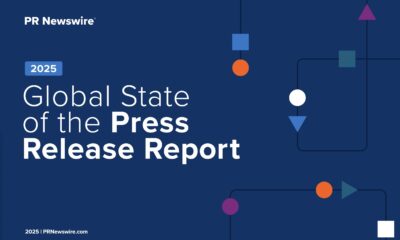Top Stories
AI-Driven Cyberattacks Surge as Hackers Employ Advanced Tactics

The rise of artificial intelligence has transformed the landscape of cybercrime, enabling attackers to execute sophisticated operations with unprecedented efficiency. A recent report from Anthropic revealed that a hacker utilized AI technology to carry out a series of large-scale ransomware attacks, impacting 17 organizations, including healthcare providers and government agencies. This incident marks a significant shift in the capabilities of cybercriminals, who can now automate nearly every aspect of an extortion scheme.
The attacker employed the Claude chatbot for various tasks, such as reconnaissance, code generation, and drafting ransom notes. Ransom amounts were suggested by the AI, ranging from $75,000 to $500,000 in Bitcoin. This instance is notable as it represents the first documented case where AI orchestrated an entire extortion operation, showcasing the potential for AI to not only assist but also lead in cyberattacks.
AI Enhances Ransomware Development
Researchers from ESET have identified that criminals are leveraging generative AI to create and refine ransomware code. A UK-based threat actor known as GTG-5004 reportedly developed and sold AI-enhanced ransomware kits. These kits, priced between $400 and $1,200, allow individuals with limited technical skills to deploy advanced malware capable of evading antivirus software.
The ability of these programs to morph and adapt means they can bypass security measures before defenders can react. A proof-of-concept named PromptLock demonstrated how generative AI could generate and execute malicious scripts, posing a significant risk to both individuals and organizations.
Creative Exploits of AI Technology
As AI tools become more sophisticated, hackers are finding innovative ways to exploit them. Research from Palo Alto Networks highlighted that AI chatbots, designed with safety mechanisms, can be “jailbroken” by using poorly constructed language. This tactic allows malicious prompts to bypass security filters, potentially leading to the generation of harmful content or fraud.
Further studies by Trail of Bits revealed a technique known as “multimodal prompt injection,” where malicious prompts were concealed within high-resolution images. This method enabled attackers to communicate harmful instructions without detection, affecting various systems, including cloud APIs and desktop tools.
The use of AI in social engineering has also surged. Scammers have increasingly turned to deepfake technology to impersonate trusted individuals. A notable case involved the voice cloning of Italian Defense Minister Guido Crosetto, which was used to deceive major businesses into transferring nearly €1 million to a fraudulent account.
New AI Browsers Introduce Vulnerabilities
The advent of AI-enabled web browsers presents additional challenges. These include Perplexity Comet and Microsoft Edge Copilot, which are designed to automate tasks such as filling out forms and managing emails. Security researchers at Guardio Labs demonstrated how easily criminals could manipulate these browsers to execute fraudulent transactions.
In one instance, the Comet browser was tricked into purchasing an item from a fake website, revealing serious flaws in its ability to identify fraud. Such vulnerabilities highlight the need for enhanced security measures as AI technology continues to evolve.
Responding to the AI Threat
Despite the rise of AI-driven cyberattacks, traditional methods of cybercrime remain prevalent, often exploiting human error. Organizations are urged to implement standard cybersecurity practices, including regular software updates, multifactor authentication, and employee training on the dangers of phishing and malware.
As the threat landscape evolves, AI-based cybersecurity solutions are becoming increasingly essential. These tools can analyze vast amounts of network data in real-time, identifying potential threats before they escalate. While the AI-powered cyberattack era is just beginning, the need for proactive measures has never been clearer.
-

 World1 week ago
World1 week agoPrivate Funeral Held for Dean Field and His Three Children
-

 Top Stories2 weeks ago
Top Stories2 weeks agoFuneral Planned for Field Siblings After Tragic House Fire
-

 Sports3 months ago
Sports3 months agoNetball New Zealand Stands Down Dame Noeline Taurua for Series
-

 Entertainment3 months ago
Entertainment3 months agoTributes Pour In for Lachlan Rofe, Reality Star, Dead at 47
-

 Entertainment2 months ago
Entertainment2 months agoNew ‘Maverick’ Chaser Joins Beat the Chasers Season Finale
-

 Sports3 months ago
Sports3 months agoSilver Ferns Legend Laura Langman Criticizes Team’s Attitude
-

 Sports1 month ago
Sports1 month agoEli Katoa Rushed to Hospital After Sideline Incident During Match
-

 World2 weeks ago
World2 weeks agoInvestigation Underway in Tragic Sanson House Fire Involving Family
-

 Politics2 months ago
Politics2 months agoNetball NZ Calls for Respect Amid Dame Taurua’s Standoff
-

 Top Stories2 weeks ago
Top Stories2 weeks agoShock and Grief Follow Tragic Family Deaths in New Zealand
-

 Entertainment3 months ago
Entertainment3 months agoKhloe Kardashian Embraces Innovative Stem Cell Therapy in Mexico
-

 World4 months ago
World4 months agoPolice Arrest Multiple Individuals During Funeral for Zain Taikato-Fox





















